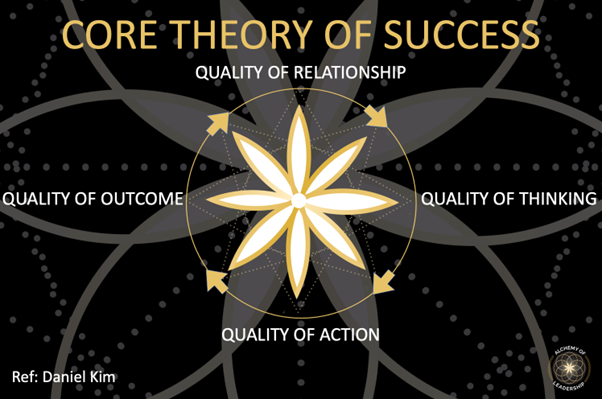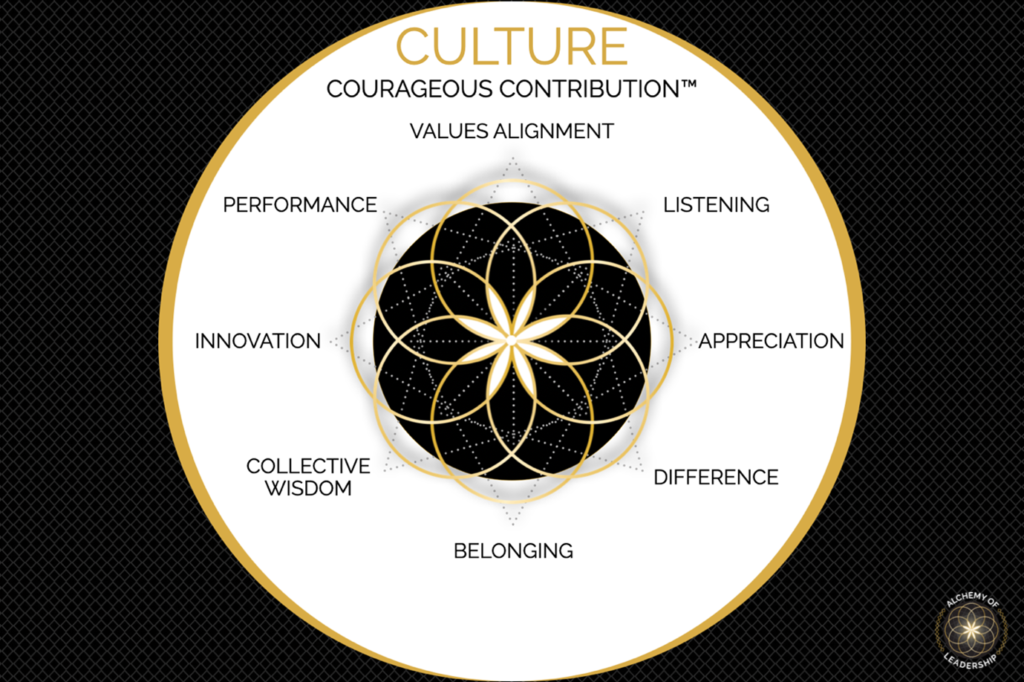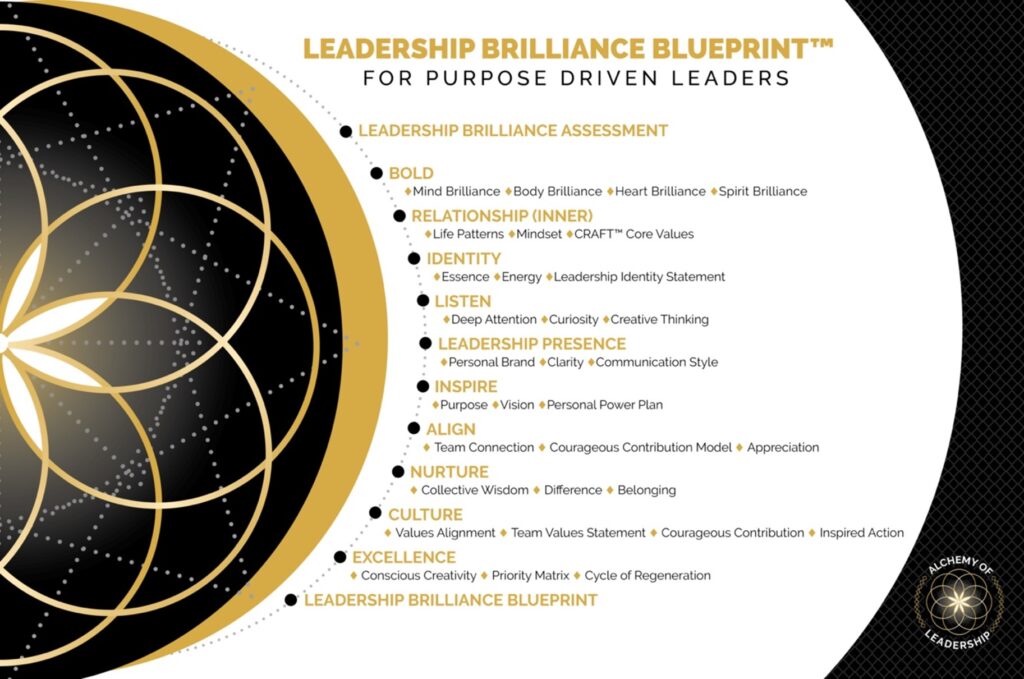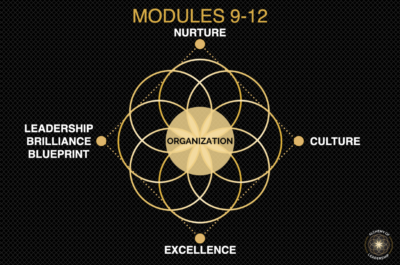Leadership Brilliance Blueprint

The Appleton Greene Corporate Training Program (CTP) for Leadership Brilliance Blueprint is provided by Ms. Cresswell Certified Learning Provider (CLP). Program Specifications: Monthly cost USD$2,500.00; Monthly Workshops 6 hours; Monthly Support 4 hours; Program Duration 12 months; Program orders subject to ongoing availability.

Personal Profile
To Be Provided.
To request further information about Ms. Cresswell through Appleton Greene, please Click Here.
(CLP) Programs
Appleton Greene corporate training programs are all process-driven. They are used as vehicles to implement tangible business processes within clients’ organizations, together with training, support and facilitation during the use of these processes. Corporate training programs are therefore implemented over a sustainable period of time, that is to say, between 1 year (incorporating 12 monthly workshops), and 4 years (incorporating 48 monthly workshops). Your program information guide will specify how long each program takes to complete. Each monthly workshop takes 6 hours to implement and can be undertaken either on the client’s premises, an Appleton Greene serviced office, or online via the internet. This enables clients to implement each part of their business process, before moving onto the next stage of the program and enables employees to plan their study time around their current work commitments. The result is far greater program benefit, over a more sustainable period of time and a significantly improved return on investment.
Appleton Greene uses standard and bespoke corporate training programs as vessels to transfer business process improvement knowledge into the heart of our clients’ organizations. Each individual program focuses upon the implementation of a specific business process, which enables clients to easily quantify their return on investment. There are hundreds of established Appleton Greene corporate training products now available to clients within customer services, e-business, finance, globalization, human resources, information technology, legal, management, marketing and production. It does not matter whether a client’s employees are located within one office, or an unlimited number of international offices, we can still bring them together to learn and implement specific business processes collectively. Our approach to global localization enables us to provide clients with a truly international service with that all important personal touch. Appleton Greene corporate training programs can be provided virtually or locally and they are all unique in that they individually focus upon a specific business function. All (CLP) programs are implemented over a sustainable period of time, usually between 1-4 years, incorporating 12-48 monthly workshops and professional support is consistently provided during this time by qualified learning providers and where appropriate, by Accredited Consultants.
Executive summary
Leadership Brilliance Blueprint
Leadership Brilliance: Igniting The Brilliant Leader Within
The Leadership Brilliance program is a unique and transformative journey designed for purpose-driven leaders. This program elevates you from an accomplished leader to a brilliant one. The program is a unique blend of personal and professional development, starting with you. A deep understanding of your internal landscape, relationship and team dynamics, strengths, values, mindset, and development areas differentiates brilliant leaders. You will navigate a path to leadership excellence using 10 core principles that include the elements of empathy, listening, relationship mastery, leadership presence, and self-awareness to build a high-performing, connected, caring, and innovative team.
Modern leaders face many challenges, including burnout, loneliness, and overwhelm. Global economic uncertainty and a workforce demanding more purpose, connection, collaboration, and authenticity from their employers are added pressures. Never mind the disruptive impact of artificial technology and the ever-increasing threat of cyberattacks. To succeed in this challenging environment, leaders must adopt a mindset that enables them to meet these challenges.
It takes remarkable leadership to guide a high-achieving team that produces outstanding outcomes while upholding a sense of connection, purpose, and a culture of Courageous Contribution™. The Leadership Brilliance program will enable you to achieve this outcome.
To make a lasting impact in the complex leadership landscape, a unique blend of personal exploration, external strategies, and tactics is required. Nature shows us the power of a growth mindset. You are born with the inherent blueprint of your fullest potential. Life experiences may have impeded that potential, setting up patterns that prevent you from reaching leadership brilliance. Leaders must heal, evolve, and seek opportunities for personal and professional development.
This requires paying attention to and developing the four aspects of your being. Body, emotion, spirit, and mind. These four elements create feedback loops between each other. As you take care of your body, you become stronger, more resilient, and have more energy. Your thoughts influence the chemicals in your body. Positive thoughts create resilience and a capacity to navigate challenges with enthusiasm. Empowering emotions of care, joy, and courage builds meaningful relationships and allows leaders to create connected teams. Having a sense of purpose and belonging to something greater than yourself nurtures your spirit, creating a sense of possibility and an empowering vision.
Your greatest calling as a leader is to build a team that is connected, caring, innovative, and inspired to excel. Meaningful connection and the ability to resolve conflict effectively require excellent communication skills and a courageous commitment to seeking win-win outcomes when faced with conflict. Becoming more self-aware and having the skill to listen deeply to yourself and others with presence and deep attention fosters an environment of understanding, trust, and connection within the team. Today’s workforce is dynamic and is constantly evolving. Leaders have the challenge of retaining and developing talent while meeting the diverse needs of individual team members. Mental and emotional health are now key indicators of a team’s ability to perform with excellence. By prioritizing your team’s well-being and integrating their input into core decision-making processes, teams can access their best thinking through the experience of belonging. This addresses the loneliness and burnout that leaders and teams are currently experiencing.

“As the quality of relationships rises, the quality of thinking improves, leading to an increase in the quality of actions and results. Achieving high-quality results positively affects the quality of relationships, creating a reinforcing engine of success.” Daniel H. Kim is co-founder of the MIT Center for Organizational Learning and Pegasus Communications, Inc.
Today’s leadership success is dependent on the culture within the organization. Cultivating a culture of Courageous Contribution is key to high performance and success. A culture of Courageous Contribution welcomes each person’s thinking, feelings, identity, age, and culture with an attitude of kindness, curiosity, empathy, and attention. When team members feel seen, heard, valued, understood, and belong, they actively participate, innovate, and come up with creative solutions to problems.
Encouraging the expression of each person’s unique perspective, strengths, and ideas will enable leaders to access the collective wisdom inherent in every team. Managing failure within the context of learning permits people to take calculated risks, own their mistakes, and correct them early and fast.

Leaders face the challenge of balancing profit against urgent social and environmental challenges. A purpose-driven leader can no longer separate social inequality and environmental issues from core business functions. A culture of Courageous Contribution extends beyond the internal business environment to build a sustainable future and positively impact social well-being.
Nelson Mandela was an example of a leader who incorporated all ten of these core principles. Madiba (his respectful Clan name) endured 27 years of imprisonment, yet he never lost sight of his purpose, to create a free and democratic South Africa.
While imprisoned he cultivated emotional resilience, a determined mindset, physical stamina, and a deep spiritual connection. In 1974, he wrote to his wife. “Difficulties break some men but make others.” His difficulties made him an extraordinary man and leader.
Madiba transcended his past experiences of oppression by staying connected to his true values. This enabled him to bring a country on the brink of civil war to unity under the banner of the Rainbow Nation. His capacity for forgiveness and desire for a peaceful transition inspired millions of South Africans to be united under his vision of unity and equality.
Madiba was a leader who truly listened. There are many examples of him taking the time to listen to people’s needs and stories, but his listening went beyond that. To prevent South Africa from experiencing the same economic decline as many other African nations, Madiba listened to and sought advice from numerous global leaders in the financial and economic sectors.
Madiba had a powerful leadership presence and personal brand, underpinned by humility. His peaceful energy had a powerful impact on everyone he met. My two young sons had the privilege of meeting him, and they didn’t want to wash their hands for weeks afterward. His shirts became legendary, as did his definitive voice and sense of humor. His presence influenced people to move beyond their limiting beliefs and their past to look to a brighter future for everyone.
For many years, Madiba’s identity was that of a freedom fighter. To unite South Africa, he had to create a new identity. One of being a peaceful yet powerful statesman. As a leader, your identity has led you to where you are now. What new identity do you need to make your vision a reality?
Madiba was a gifted orator and aligned people with his vision of a new South Africa through his incredible example of forgiveness. He accepted the pain of the past but didn’t let it stop him from looking forward to a better future. He led by example in his courageous commitment to win-win outcomes.
His open heart and exceptional mind made each person feel that they mattered. He welcomed hearing people’s differing perceptions and beliefs and nurtured them. Very few people were able to resist his authentic caring for all the people in South Africa and across the world. His gestures of reconciliation opened up the possibility of a culture of Courageous Contribution. He always placed the needs of the people over those of his own and lived in service to the country he fought so hard to free. His commitment to his values, sincerity, courage, authenticity, love of fun, and excellence made him the iconic leader of the Rainbow Nation, and his legacy is still felt throughout the world.
The Leadership Brilliance program equips leaders with the same ten core principles illustrated by Madiba. Tools to future-proof their businesses and unify their teams. Navigating the complex world of global uncertainty and disruptive technologies that are changing entire industries and the ongoing threat of cyberattacks means leaders and their teams must adapt and innovate. This requires a robust environment where people can think, challenge the status quo, and have the energy to meet new challenges enthusiastically. A bold, positive, and progressive mindset is essential.
A compelling vision and the ability to articulate it with clarity and inspiration empower leaders to align their team’s actions. This ability to influence and inspire is a key element of the leadership brilliance program. The courage to take calculated risks and move into the realm of conscious creativity instead of merely reacting to the external environment is a key difference in the journey to success.
The Leadership Brilliance program goes beyond traditional leadership models. The program incorporates ten core principles over 12 months. Underpinning each principle are key skills and blueprints to catalyze your leadership. The course takes you on a profound inner journey to reconnect to your core values, strengths, and purpose to ignite your inner brilliance. You will gain expertise in developing a powerful framework for cultivating mental, emotional, physical, and spiritual well-being. Boost your focus, resilience, and decision-making abilities. Enhance your ability to lead with purpose, build an engaged, high-performing team, and leave the legacy that most purpose-driven leaders dream of. You will be equipped with the tools and strategies to lead with excellence in every area. Take your leadership to the next level by participating in the Leadership Brilliance Program and unleash the brilliant leader within you.

Curriculum
Leadership Brilliance Blueprint – Part 1- Year 1
- Part 1 Month 1 Core Principles
- Part 1 Month 2 BOLD Blueprint
- Part 1 Month 3 Relationship (Inner)
- Part 1 Month 4 Identity
- Part 1 Month 5 Leadership Listening
- Part 1 Month 6 Leadership Presence
- Part 1 Month 7 Inspire
- Part 1 Month 8 Align Teams
- Part 1 Month 9 Nurture People
- Part 1 Month 10 Courageous Culture
- Part 1 Month 11 Excellence
- Part 1 Month 12 Brilliance Blueprint
Program Objectives
The following list represents the Key Program Objectives (KPO) for the Appleton Greene Leadership Brilliance Blueprint corporate training program.
Leadership Brilliance Blueprint – Part 1- Year 1
- Part 1 Month 1 Core Principles – Dive into the world of Leadership Brilliance. Gain insight into the ten core principles that underpin brilliant leadership. Begin your journey of self-discovery through an enlightening assessment of your unique essence, strengths, and leadership style.
- Part 1 Month 2 BOLD Blueprint – Understanding yourself is essential to Brilliant Leadership. Address the four elements of Mind, Emotion, Physical, and Spirit Brilliance. Deeply connect to your essence in each of these areas and learn to lead from a place of energy, inspiration, connection, and purpose. Build a bold framework that helps you to balance all of these areas.
- Part 1 Month 3 Relationship (Inner) – Embark on an exciting journey of personal discovery.
Explore the influence of generational, cultural, and personal patterns on your ability to lead with brilliance. Your beliefs, assumptions, values, history, talents, strengths, and needs all determine your mindset. Discover how to use your inherent strengths and talents to overcome limiting beliefs and assumptions. Craft™ Core Values that become the compass that gives your life and leadership direction.
Become the architect of an empowering psychology and lead and live with purpose and inspiration - Part 1 Month 4 Identity – Identity is related to your internal sense of self, character, roles, and labels. It also relates to the perception of how others view you. Your current identity has facilitated your leadership success so far. Stepping into Leadership Brilliance requires an expansion of your identity and a deeper connection to your essence. Understand the principles of the four “F”s of consciousness and how to move from feeling flattened and fighting to being in a state of flow and freedom.
Create a Leadership Identity Statement aligned with who you want to be, the role you want to fulfill, and the impact you want to make. - Part 1 Month 5 Leadership Listening – The most profound leadership skill is the ability to pay deep attention to your thoughts and feelings as well as the thoughts and feelings of your team. Attention is an undervalued currency that opens the door for creativity, innovation, and solutions. Developing an attitude of curiosity invites deeper thinking, collaboration, and contribution. This allows creativity to flourish. Instead of reacting to the external environment you are innovating it. Embed the five essential skills to listen and lead.
- Part 1 Month 6 Leadership Presence – Your authenticity, energy, empathy, enthusiasm, and generosity all impact the people around you. Developing each of these areas enhances your ability to influence for the greater good. Creating a personal brand that encapsulates your essence, values, and expertise ensures you show up consistently as your best self. Being able to communicate with clarity while remaining humble builds trust and safety for team members. Developing the power of presence is a skill that can be learned through the integration of a greater sense of self-confidence, self-esteem, positioning, and authority.
- Part 1 Month 7 Inspire – Define your purpose based on your core values. Discover the cycle of creation inherent in nature and learn to apply it in your business and life. Refine your vision to leave a legacy that contributes beyond profit to the environment and society.
Develop a Personal Power Plan that synthesizes your values, purpose, vision, and mission. - Part 1 Month 8 Align Teams – Create powerful team connections through the Courageous Contribution model. Having a compelling vision that team members are aligned with and feel they can influence brings a sense of purpose. Discover the science of appreciation, which influences your ability to create meaningful relationships at work. How people are treated directly impacts their ability to think creatively for themselves. “The quality of every action is dependent on the quality of the thinking behind it.” Nancy Kline
The ability to tell stories that unify, while offering a shared understanding of difference, brings people together in the pursuit of a shared goal. - Part 1 Month 9 Nurture People – Inherent in each team is a wealth of collective wisdom. This is only accessible if there is an environment of mutual respect, a desire to understand each other, and an acceptance of each person as a unique individual. Nature teaches us how to thrive through diversity and difference. Exploring different cultures, gender identities, and generational differences, as well as differing world views, allows access to this collective wisdom. Creating a culture where each team member matters and is accepted creates a deep sense of belonging. Create a framework for communication that builds trust, and safety and addresses power imbalances. This results in retained talent and the creation of an organization that people want to work for.
- Part 1 Month 10 Courageous Culture – When team members and business values align, then work becomes a vehicle for expressing personal values. This results in a powerful sense of meaning, purpose, and belonging. In this workshop, the creation of a team values statement builds the bridge between personal values and business values. A team that feels valued, understood, and appreciated contributes to the realization of the company’s vision. Inspired action comes from a deep alignment of purpose and vision. Action closes the gap between where you are now and where you want to be. Understand the neuroscience behind inspired action and how that state can be achieved daily.
- Part 1 Month 11 Excellence – In this fast-changing world, it is simply not enough to react to external influences; you need to be consciously innovating and staying ahead of the curve. This refers to your internal as well as your external world. Moving from reactivity to conscious creativity means moving out of your comfort zone. Distraction is the enemy of excellence, and in this workshop, you will formulate your Personal Priority Matrix. To thrive, you need to live and work within the cycles of regeneration and learn the power of rejuvenating rituals. Excellence is demanding, and to achieve it, leaders need to understand the power of rest, relaxation, and fun.
- Part 1 Month 12 Brilliance Blueprint – The creation of your Leadership Brilliance Blueprint brings everything you have learned together in a plan that gives you a solid foundation to step into your leadership Brilliance. This unique combination of personal and professional development will elevate your leadership, bring deep meaning to your work, and create a team that has a personal investment in the business’s success.
Methodology
Leadership Brilliance Blueprint
The Leadership Brilliance Blueprint is built on a proven step-by-step process to enable good leaders to become brilliant ones. Purpose-driven leaders desire to lead passionately, positively influence their teams, and impact their businesses and communities. Few achieve this goal. The program incorporates the 10 core principles necessary for Brilliant Leadership. Underpinning each principle is a step-by-step blueprint that takes leaders on a journey of learning, doing, and integrating.
Program Planning
The Leadership Brilliance program begins with an assessment to give each participant a clear indication of their core competencies in each of the ten areas of leadership brilliance. The first four modules are the foundation for your internal leadership to evolve and grow. A deep understanding of yourself is the first step in leading yourself. Leading yourself allows you to navigate through limiting beliefs, overcome patterns that hold you back, and develop a rich inner relationship with yourself so you can thrive.
Building on this strong foundation the next four modules expand to include team leadership. These modules incorporate the skills and best practices to build a team that is aligned, purposeful, and willing to go the extra mile to achieve the vision of the business.
The final four modules incorporate the steps to make an impact as a leader and build a Culture of Contribution™ throughout the organization and into the community. Having a clear Personal Priority Plan™ declutters distractions and allows you, as the leader, to focus on what is going to have the greatest impact. Throughout each of these modules, you will be crafting your own personal Leadership Brilliance Blueprint. An overall plan that will provide a clear path to your ongoing journey to success.
Program development
The Leadership Brilliance program is based on the foundations of Applied Psychology, Positive Psychology, and Neuroscience. To make sustainable shifts in your ability to lead yourself and others, change needs to come from the inside out. Humans are not biologically wired for change. Understanding the feedback loops between thoughts, emotions, and physiology provides the framework to make positive changes. Your thoughts create emotions, and emotions create physiological responses in the body. Changing your physical state can release powerful hormones such as oxytocin and testosterone, boosting feelings of connection and self-confidence. Your thoughts, feelings, vitality, and purpose all directly influence your ability to perform and lead.
The first four modules give you a powerful collection of personal development tools, frameworks, and blueprints. These include the BOLD Blueprint™ a shield that balances the four key areas of Physical, Emotional, Mental, and Spirit Brilliance. The CRAFT™ Core Values process is a compass that will empower you to make decisions in alignment with your purpose, vision, and values. Your Leadership Identity Statement synthesizes your essence, your purpose, and the impact you want to make. Few leaders have such a powerful reminder of who they are, why they are doing what they do, and what legacy they want to leave behind. This is an anchor that keeps you grounded in turbulent waters and is a guiding light for keeping you inspired, committed, and bold.
The second four modules build on this powerful foundation. The expansion of your leadership to include the people in your team. This is based on the four pillars of Listening, Leadership Presence, Inspiration, and Alignment. The quality of team thinking, actions, and outcomes is based on the quality of the relationships within the team. Your role as a leader is to foster quality relationships by applying the building blocks of exceptional relationships. These are skills that may come naturally to you or can be learned and incorporated into your leadership style. Deep listening to your and others’ thoughts and feelings while managing your response is a key element of this module. Cultivating an attitude of curiosity and appreciation creates an environment for exceptional thinking, which inspires action and positive results. Your communication style is defined by many elements. The key elements are your personality, leadership presence, clarity, intention, and ability to adjust to different contexts. In this module, you will embed the five essential skills to listen and lead a connected, high-performing team.
An inspired team is aligned with the vision of its leader. To be inspiring, purpose and vision need to be aligned. You will work through the Personal Power Plan™ Blueprint to synthesize your values, purpose, vision, and mission. The introduction of the Courageous Contribution Model™ aligns your team around the shared vision and mission.
The third four modules extend your Leadership Brilliance further into the organization as well as the community. You continue to embed new skills through easy-to-follow blueprints that set you up for success. You will develop a framework to nurture the people in your business, create a sense of belonging, and welcome differences in ideas, gender, generations, and culture to access the collective wisdom inherent in your team. The Courageous Contribution Model builds a bridge between the teams’ values and those of the business so that work becomes meaningful and purpose driven. The Priority Matrix™ brings a laser focus to your key strategies, declutters distraction, and creates a culture of excellence. The Cycle of Regeneration brings balance between high performance and recovery and rest. Nature teaches us the cycles to recharge energy daily and weekly and to work within the seasonal cycles. This prevents burnout and allows people to sustain excellence in everything they do. The Cycle of Regeneration includes exploring ways the business can contribute to the regeneration of the ecosystem within which it operates.
Program Implementation
The program is implemented through learning, doing, and integrating each of the ten core competencies of Leadership Brilliance. Each module comes with a lesson plan that includes the following: learning outcomes, trademarked blueprints for each topic, recommended activities, and skill tags. At the end of each module, Leaders complete a mini quiz as evidence of accomplishment
Program Review
In the final module, leaders present their Leadership Brilliance Blueprint. The Blueprint incorporates each element of the Leadership Brilliance Program and reflects the pathway of growth each participant has experienced. This allows for meaningful reflection, integration, and appreciation for the enriching experience of completing this program. It is an opportunity for participants to receive appreciation for their courage, commitment, and determination to make the internal shifts and external changes necessary to shine as Brilliant Leaders.
Industries
This service is primarily available to the following industry sectors:

FinTech
Financial Technology or FinTech describes the process that seeks to improve and automate the delivery and use of financial services. The phenomenal rise of this disruptive industry has changed the financial landscape. The use of modern technology has challenged traditional banking models and seeks to bring effortless digital financial solutions to businesses and the greater population.
History
Up until 2008 traditional financial institutions and banks enjoyed unquestioned public trust. With the onslaught of the financial crisis, this trust was eroded, leading to an explosion of FinTech companies offering alternative financial solutions. The adoption of smartphones saw a further increase in the availability of these new technologies. The use of secure online payments revolutionized the payment ecosystem for suppliers, vendors, and the public. Blockchain technology and the launch of cryptocurrencies herald a new age of decentralized finance. With the potential to redefine financial transactions and record keeping.
These giant leaps in technology have accelerated the demand for secure payment options from the fintech industry.
Current Position
The COVID-19 epidemic vastly accelerated the upward trajectory of digital financial services. Since then, Fintech revenue has outpaced that of traditional banking. Reports in 2023 suggested FinTech revenue would be in the region of $150 billion to $205 billion globally [Fintechs: A new paradigm of growth, McKinsey] Estimates suggest a global FinTech market CAGR (Compound Annual Growth Rate) of approximately 16.8% reaching $492 billion by 2028. (FinTech Market Growth Statistics, Blue Tree Digital.)
This union between finance and technology has impacted industries and the general population in numerous ways and is constantly pushing boundaries across the sector. The offering of simple and effective online payment solutions has empowered the unbanked in underserved communities. The landscape of informal markets in places such as Africa and Latin America has been transformed due to the impact of modern fintech solutions. Instant payments, microloans, mobile wallets, and the ability to track spending and investments have revolutionized the way micro businesses and their clientele transact. Enhanced transparency and competition through Open banking APIs and AI-powered fraud detection, all contribute to this financial revolution.
For leaders in the industry to continue to enjoy continued growth, the following challenges need to be addressed:
Compliance with regulatory frameworks: Regulatory bodies are often one step behind the increasingly innovative nature of the industry. Leaders need to ensure consumer protection and compliance are part of the innovation process. While driving innovation and taking calculated risk to ensure the future of the business.
Cyber security: Fintech businesses are responsible for the handling of highly sensitive financial data. Data breaches in 2023 affected over 350 million people. Highlighting the critical need for investment in robust security systems and a culture of cyber security awareness in teams.
Competition: The Fintech industry is highly competitive and requires leaders to clearly define their value proposition and focus on niche markets. Building a trustworthy brand that delivers on its promises of innovation, security, and transparency requires a high-performing team that boldly challenges the status quo. Success hinges on market conditions, strategic financial management, and a strong employee culture. Getting this balance right differentiates the leaders in the industry. At the forefront are companies such as Chime US, a major player leading the way in fair and transparent digital banking platforms that made the 2023 Forbes list of America’s best start-up employers. Another top performer is Stripe, an organization that is attracting top talent through its powerful employee culture that embraces learning, growth, and innovation while being at the forefront of payment technology.
Building user trust and financial literacy: Creating a brand promise of trust is a major challenge in the fintech industry. Consumers are no longer willing to part with personal information unless they are secure in the knowledge that the most stringent security protocols are in place.
Education and financial literacy programs are key to solving this challenge. Educating consumers on both the risks and benefits of technological solutions is key to building trust. Empowering previously unbanked and underserved communities with the financial knowledge to leverage these powerful payment solutions will go a long way toward promoting trust through inclusion.
Talent acquisition and retention: It is no longer viable to expect people to perform based solely on income. Today’s multi-generational workforce is seeking more than just a pay check. Purpose, work-life balance, autonomy, flexibility, growth, belonging, and social impact all contribute to high performance. This requires leaders to foster a culture catering to the differing needs of their team. Leaders need to be self-aware, emotionally intelligent, and sensitive to their teams’ well-being.
Future Outlook
This innovative and exciting field can continue its positive impact on people, the economy, and the planet. Fintech is already impacting the “Green Movement” with options such as green financing platforms, impact investing, promoting green practices such as tracking carbon footprints, and green lending programs. As the industry continues to evolve, there are many more promising green solutions on the horizon.
The future of the FinTech industry is full of opportunities, including continued innovation in areas of artificial intelligence. Artificial intelligence will lead to a more personalized experience while providing greater security through improved fraud detection. Open banking APIs will enable secure data transfer and encourage further innovation and competition.
Consumer protection and a more financially stable ecosystem will result as regulatory bodies evolve to keep pace with the disruptive nature of the industry.
This industry is set to continue to reshape the global financial landscape. The ever-changing needs of consumers and the accelerating pace of technological advancements mean we will see more radical transformation in this sector.
The Leadership Brilliance Program is designed to equip leaders in this exciting field to meet the above challenges and allow them to navigate future success using the latest cutting-edge leadership education. The program provides leaders with the skills to take themselves, their teams, and their organizations into the future with brilliance.

Wellness Industry
The Global Wellness Institute (GWI) defines wellness as “the active pursuit of activities, choices and lifestyles that lead to a state of holistic health.”
The Wellness industry has become a global phenomenon. The $5.61 Trillion Wellness economy is now 3.4 times bigger than the Pharmaceutical Industry. This thriving industry has expanded from its initial focus on fitness and nutrition to include categories of meditation, sleep, mental and emotional health, beauty and workplace wellbeing. New industries such as wellness tourism and wellness real estate are all part of this paradigm shift to wellness.
History
Historically wellness was related to natural remedies and ancient practises. The emergence of physical health and nutrition trends in the late 20th century formed the foundation for today’s wellness economy. The rise in healthcare costs, chronic disease and stress related disorders has increased the demand for more sustainable healthcare. The incorporation of a more holistic approach that includes mental, emotional and spiritual wellbeing has led to the expansion of the wellness industry. Factors that are driving the unprecedented growth of the industry is consumer awareness of the need for self-care and prevention as well as the importance of holistic wellbeing. The industry scope has been broadened by the merging of beauty and wellness, with an increased focus on natural and clean products. Technology is having a significant impact on how consumers manage and measure their wellness. Wearable devices, wellness apps and virtual platforms are transforming how people relate to wellness practices.
Current Position
Driven by consumer preferences, technological advancements and the increased awareness on well-being, this multi-billion dollar industry is set to evolve and grow at a rapid rate. The inclusion of fitness, nutrition, mental health, alternative therapies, and beauty under the wellness umbrella has resulted in a dynamic and multifaceted ecosystem.
Key trends driving the market are: Personalized wellness programs, consumers are seeking tailored wellness solutions to meet their specific requirements. Preventative healthcare where the shift to proactive wellness strategies is emphasised. Sustainable practices that take into account environmental impact and ethically sourced products and services.
The increased pace of modern lifestyle, work and social pressure are all key factors contributing to the explosive expansion of the Wellness industry. The resultant increase in chronic disease along with the associated costs, stress, burnout and digital overload are motivating consumers to take preventative measures and incorporate self-care into a personalized wellness practice. The popularity of this holistic approach has been driven by social media platforms and influencers creating a sense of community among wellness enthusiasts. An increase in disposable income has enabled more people to invest in wellness products and services. The wellness industry has significantly impacted individuals and society. It has empowered people to take control of their health, reduced healthcare costs, and promoted a more balanced lifestyle.
A significant portion of the wellness industry employs a multi-level marketing (MLM) approach to distribute products. Companies like Herbalife, Amway, and Isagenix are prominent examples. MLM models leverage the power of personal relationships and proven products to facilitate individuals earning income through product sales and recruiting new distributors. This offers opportunities for personal wellness, entrepreneurship and financial health. This model requires consumers to research the opportunity to ensure that they are becoming part of an ethical and legitimate MLM Company.
Challenges
The Wellness industry is well positioned to continue its growth curve, however it faces a number of challenges.
Standards and regulations are inconsistent across sectors leading to a lack of trust and difficulty in choosing reputable providers.
Misinformation and Wellness Movements that make false promises of quick fixes and instant transformation have left people disillusioned and has tarnished the reputation of many legitimate wellness businesses.
A lack of sustainable practices in packaging and ethical sourcing has a negative impact on the environment
Expensive products and services exclude lower income consumers from benefitting from health products that could significantly improve the quality of their lives.
Information overwhelm makes it difficult for consumers to discern the credibility and claims of products and services.
Paul Polman (Unilever’s CEO) recently confessed: “Our biggest threat is that we lose connection with millennials. Millennials want committed brands with authentic products. Natural, simpler, and if possible small, as small as you can.”
Future Outlook
The future of wellness is bright, with a focus on personalized wellness, preventative care and the integration of wellness into everyday life. Technology is set to play a key role through diagnostic tools, accessibility to data and provision of effective solutions. The introduction of AI-powered coaches, data analysis and reporting will enhance wellness offerings across many sectors. The holistic integration of mental, physical, emotional and spiritual wellness will continue to expand.
A more conscious approach to sustainability and ethical sourcing is set to transform the wellness sector and better align it with environmentally friendly behaviours. Sectors such as Wellness tourism, Wellness real estate and the Spa Economy are all set to expand in the near future. As consumers search for genuine, sustainable and practical wellness solutions they will be more discerning and opt for wellness companies that demonstrate best practice in ethics and product performance. Consumer education will lead more discerning and value driven purchasing behaviour.
The wellness sector has a bright future with the potential to significantly impact the pursuit of optimal health for both individuals and society.
To optimise the opportunities of the future Wellness organizations need to lead with Brilliance. Economist Thierry Malleret, asks “Are wellness companies walking the wellbeing-at-work talk?”
The Leadership Brilliance Program is designed to equip leaders in this exciting field to meet the above challenges and to navigate future success within the wellness at work context. Using the latest cutting-edge leadership education this program provides leaders with the skills to take themselves, their teams, and their organizations into the future with brilliance.
Hospitality
The hospitality industry is a cornerstone of the global economy contributing 9,9 trillion USD to the global economy in 2023, according to Statista. The industry encompasses a broad range of services that include accommodation, food and beverage, and travel and tourism. It is based on consumer centric solutions, that provide rich and diverse experiences for consumers. Personalized care, convenience and attention to detail are trademarks of the industry. The Hospitality industry plays a crucial role in fostering economic growth, cultural exchange and employment.
History
The hospitality industry has been through radical transformation over the last two decades. It has been impacted with disruptive businesses such as Airbnb and the emergence of the “sharing culture”, that offer alternatives to traditional hotel accommodation. The rise of digital innovation enabled online bookings for flights, accommodation and experiences. Digital check-ins and room keys further enhanced the consumer experience. Hotels embraced the digital revolution with personalised guest services via apps and chat bots. The shift to sustainability and eco-friendly travel, lead to a demand for the adoption of green initiatives within the industry. The demand for greater personalization and experience-based travel has led many companies to curate tailored and culturally authentic experiences for their clients. There has been a dramatic rise in the expansion of the larger hotel chains with Marriott, Hilton, and Accor acquiring smaller brands. This enabled them to offer a range of accommodation along with personalized loyalty programs. The biggest blow to the hospitality industry was the COVID-19 pandemic. Travel restrictions and lock downs resulted in massive losses and the closure of many businesses. This changed the face of travel globally resulting in the implementation of revised hygiene and safety protocols, staycations becoming more popular as well as short term rentals as remote working became more of a trend. As travel restrictions eased the hospitality industry started to rebound the industry was then impacted by labour shortages as previous employees had sought alternate employment.
Current Position
Despite these recent challenges, the hospitality industry continues to thrive. It is estimated that the hospitality industry will contribute 11.1 trillion USD to the global economy in 2024, outperforming pre-pandemic levels. (Statista.)
There are several key trends continuing to reshape the industry. This includes the ongoing adoption of digitization and the use of technology to enhance consumer experience. Online booking platforms, apps, property management platforms, AI and automation are being used to improve efficiency and reduce costs. Consumers continue to seek experiential travel with personalized experiences leading to a demand for customised hospitality solutions. The growing awareness of the need for more sustainable practices has led many industry leaders to adopt more energy efficient operations and responsible sourcing reducing the impact on the environment.
Key Challenges
The hospitality industry faces several challenges. This industry is highly susceptible to economic fluctuations which influence demand and occupancy rates, natural disasters and crisis such as the pandemic. Innovative technology and disruptive new players are impacting an already competitive landscape. Labor issues continue to be a threat as the workforce seeks more overall job satisfaction within an industry that is demanding of time and energy. Maintaining high levels of service while managing costs and profitability is a consistent issue in the industry. Attracting and retaining skilled staff is an ongoing industry challenge. While the industry serves a diverse range of consumers it can be lacking in diversity in the leadership arena. The early adoption of technology is critical in this competitive environment, keeping up with the pace of innovation can be difficult for some hospitality businesses. Balancing profitability with sustainability is an ongoing challenge as the industry seeks to meet the demand for more conscious use of resources.
Future Outlook
The outlook for the hospitality industry is filled with opportunities for growth and innovation. Individual needs of guests will remain a top priority with hotels and restaurants providing personalized experiences. Wellness trends will further impact the industry as the demand for wellness and wellness tourism continues its upward trend. The continuation of remote work and an increase in digital nomads will create further opportunities within the sector.
As a significant contributor to the global economy through accommodation, food and beverage services, events and tourism the sector creates millions of jobs from hotel staff and chefs to tour guides and event planners.
The industry is dominated by a few major players that are renowned for setting world class standards for service and innovation. Marriott International, Hilton Worldwide, InterContinental Hotels Group, Accor, Hyatt Hotels Corporation are industry leaders with an ethos for providing exceptional client experiences.
The hospitality industry is set to continue its upward growth trajectory as consumers seek new experiences, desire to travel to new places and become global citizens.
To lead in this fast paced and changing eco system requires a people centric approach and a growth mindset that allows for the early adoption of innovation. By fostering an inclusive and diverse culture, embracing technology, prioritizing sustainability and effectively staying ahead of market trends leaders can transform the above challenges into the stepping stones of success. The Leadership Brilliance Program is designed to equip leaders in this exciting field to navigate future success and continue to deliver excellent service within the hospitality industry. Using the latest cutting-edge leadership education this program provides leaders with the skills to take themselves, their teams, and their organizations into the future with brilliance thus ensuring long-term profitability.

Travel & Tourism
The tourism industry refers to a broad network of organizations involved in delivering products and services to travellers and tourists. It is a service industry that includes both commercial and non-commercial entities, with a wide range of characteristics and complexities. (Science Direct) This diverse industry includes accommodation, transportation, attractions, travel agencies and hospitality services. According to World Travel and Tourism Council’s (WTTC) figures released in 2023, the estimated total contribution of the travel and tourism sector to the global economy for 2023 increased to 9.4 trillion US dollars which is 9,2% of global GDP. The recent rise of digital technology and increased air travel has contributed to global economies. The manner in which people plan and experience travel has transformed dramatically.
History
Prior to the 2000’s the industry relied on conventional forms of travel and vacation planning, relying on travel agencies, and printed media to plan and book their holidays. The advent of the internet significantly impacted the manner in which consumers researched, planned and booked their travel. The emergence of online booking agencies such as Booking.com and Expedia revolutionised the consumer experience, allowing for more convenience and control over their travel plans.
The industry is sensitive to economic fluctuation and was dramatically impacted by the financial crisis in 2008. Between 2008 and 2019 the industry demonstrated its resilience in recovering from this major event. This was largely driven by the rising middle class in emerging markets and the increase in low-cost airlines offering greater opportunity for international travel experiences.
In 2020, Covid-19 brought a freeze to travel as cities and countries went into lock down. This had a severe effect on the tourism industry. Airlines, hotels, cruise lines and tour operators faced the critical challenge of trying to maintain their businesses during this period. Post Covid the pent up demand for travel assisted the industry to regain traction and begin the path to recovery.
Current Position
The tourism sector has experienced significant growth between 2021 and 2024 with estimates predicting revenue to exceed pre pandemic earnings by the end of 2025. Technology continues to influence the industry with disruptive platforms such as Airbnb, Expedia and Booking.com making it significantly more convenient for consumers to manage and personalize their travel experiences. The introduction of Ai to customize travel experiences and blockchain to facilitate secure payments are becoming more mainstream as companies adopt the latest technological advancements to stay ahead of the curve.
The requirement for curated experiences has transformed the tourism eco system giving rise to unique personalized and immersive offerings from the industry. The shift in demand to wellness tourism has led to an increase in wellness retreats and wellness focussed travel experiences.
The trend for more sustainable and responsible tourism has gained significant traction leading to consumers prioritizing eco-friendly and socially responsible travel options. The tourism sector has had to realign priorities in order to meet this shift in consumer behaviour.
Key Challenges
The pandemic decimated the tourism industry resulting in severe financial losses, business closures and significant layoffs. Disparate regions are in different stages of recovery depending on the impact of the pandemic in a particular area. These sectors require investment and funding to regain their pre covid bottom line.
Environmental impact remains a key concern as the tourism sector is one of the highest contributors to carbon emissions, environmental degradation and over tourism in certain destinations. Balancing profitability against the calls for more sustainable practices is a key challenge within the industry.
Businesses are needing to guard against becoming irrelevant as new technology gains traction in the tourism space. Digitization, Ai, blockchain and data analytics are all transforming the tourism space, whether through curating personalized experiences, secure contactless payment platforms or virtual tours, this technology is here to stay.
The tourism industry is still being challenged by the massive labour exodus experienced during the pandemic. Employees left the tourism industry en masse seeking alternate job opportunities and certainty during an uncertain time. Labor shortages and a lack of skilled personnel are still plaguing the industry on its road to recovery. Shifts in workers expectations and values are limiting the ability of some businesses to fully recover.
Today’s traveller differs significantly from consumers pre covid. The desire for personalized experiences, health and wellness options and a focus on sustainable travel solutions are key trends. The demand for work from anywhere solutions is on the rise as digital nomads seek hybrid work-cations that enable them to stay connected anywhere in the world.
Future Outlook
The future is bright for tourism industry with several key trends influencing its evolution. Sustainability is a primary trend with the growing consciousness for the need for eco-friendly and sustainable travel solutions. Offsetting carbon footprint through green technologies such as electrical aviation and carbon neutral travel are on the horizon. Promoting practices such as off peak travel, eco and domestic-tourism and local community engagement will go a long way to ensuring tourism benefits both the consumer and the communities it impacts.
Digital transformation is reshaping the face of the tourism industry. The introduction of virtual and augmented reality is facilitating virtual tours and pre experiences of destinations. This assists consumers to make informed decisions before making the investment in their travel plans. Data analytics and Ai allow for a more personalized experience saving consumers time in researching different options. Using Ai to digitalize and automate elements such as check-ins, payments, virtual travel assistants and hotel concierge services are all set to provide more convenience to consumers.
Attracting and retaining talent is a key focus for the future of the industry. Investing in employee well-being, training and competitive wages will ensure the longevity of the employer/employee relationship. Bringing stability to companies as they continue on their growth trajectory. The introduction of automation in areas such as check in and customer service will assist in alleviating the strain on staff.
Post pandemic travellers are interested in wellness focussed travel solutions, with an interest in spa retreats, time in nature and fitness experiences. In addition they are seeking culturally immersive and authentic travel adventures. Experiences that support local communities and economies are becoming more sought after.
The tourism industry is set for a golden future provided it embraces the opportunity to innovate, adopt sustainable practices and deliver on the changing preferences of the new generation of travellers.
Leaders in this sector have the task of balancing growth with sustainability, adopting cutting edge digital tools and maintaining a people centred culture that fosters diversity, inclusivity and innovation. The Leadership Brilliance Program is designed to equip leaders in this exciting field to navigate future success and continue to deliver excellent service within the tourism industry. Using the latest cutting-edge leadership education this program provides leaders with the skills to take themselves, their teams, and their organizations into the future with brilliance thus ensuring long-term profitability and impact.

Aviation
The airport industry forms a critical element of the aviation sector. The aviation sector is a major contributor to the global economy, accounting for $3.5 trillion (4.1%) of GDP. Commercial aviation drives 5% of the GDP in the United States alone, or an astounding $1.25 trillion in 2022. (Straits research) Approximately 87.7 million jobs are supported by this industry worldwide, of which 11.3 million are direct work opportunities. One of the significant aspects of the aviation industry is the functioning of airports and carriers.
The airport industry plays a crucial role in the transportations of passengers and cargo throughout the world. These transportation hubs have evolved from mere transit points to multifunctional centres incorporating retail, dining and leisure services. Airports contribute significantly to the economic vitality and competitiveness of the regions they serve. By enabling access to global markets, facilitating business travel and attracting investment, airports play a significant role in regional economic strategies.
History
Up to and including the early 2000s the airport industry functioned as logistical hubs, facilitating the safe and efficient travel of people and cargo across the globe. The advent of disruptive airlines that offered low cost solutions to consumers brought about greater accessibility for inexpensive travel opportunities. This caused a revisioning of the role of airports and the transition from merely a transportation hub to providing consumers with a retail, dining and leisure experience.
9/11 had a radical impact on the airport industry with the increased demand for secure and safe transportation of travellers. Major security updates where introduced on a global scale, increasing complexity in operations and raising costs.
The 2008 financial crisis had a short lived impact on the airport industry with a temporary reduction in travel. However international connectivity and travel was becoming a global trend and the industry rebounded due to an increase in infrastructure investment.
Covid-19 drastically impacted the airport industry with monumental financial losses as airports faced an unprecedented reduction in air travel due to lock downs and health restrictions. In the below figure, Forbes estimated that GDP would be worse than the 2009 crisis. For an industry directly contributing to and relying on the economy this resulted in a crisis across the industry. The increased cost of health and safety protocols and complexity for travellers added to the burden experienced by the airline industry.
Current Position:
The industry has made a significant recovery from the heavy losses experienced as a result of the COVID-19 epidemic. The requirement of rigorous health and safety protocols resulted in the development and implementation of contactless technology. Biometric check in, digital boarding passes and contactless payments have gone a long way to creating a seamless experience for travellers while keeping health and safety a priority.
The airport industry plays a significant role in facilitating seamless travel and trade, and is a crucial economic driver in the aviation sector.
Revenue is generated through diverse income streams both aeronautical and non-aeronautical. Aeronautical income is generated from airlines and aircraft operations including landing, parking and passenger fees and fuel sales.
Non-aeronautical income is made up of rental income within airport terminals including retail and duty-free shops and restaurants. Car parking, advertising space and sponsorship, commercial rental income, ground transportation costs and shared income from service provider partnerships and all contribute to revenue.
This income supports the operations, infrastructure development and maintenance of the airport, while providing essential services to travellers, airlines and cargo management.
Key Challenges
Balancing operational efficacy with stringent security and health and safety remains a an ongoing challenge. The global increase in air travel has led to a correlating increase in crowded terminals and delays particularly during holiday periods. The additional load on infrastructure requires careful management of resources and capacity.
As a significant contributor of carbon emissions and environmental degradation the industry has come under increasing pressure to reduce and offset its carbon footprint.
Travelers have come to expect seamless travel experiences supported by smart technology. It is challenging to integrate modern technologies while sustaining operational efficiency.
Competition is fierce between airports both regionally and internationally particularly in the areas of tax advantages or premium services. Airports consistently need to offer differentiating services to ensure client loyalty.
The Airport industry relies heavily on a diverse workforce to ensure smooth operations, excellent customer service and technical implementation of processes. Managing staff expectations, well-being and training requirements is a critical element in ensuring smooth operational efficiency.
Future of Outlook
The outlook for the airport industry is set for continued growth. With the following themes contributing to ongoing success. The implementation of modern technology to create an ecosystem that facilitates automated travel in the form of biometrics, contactless payments and automated terminals for faster more secure journeys.
To complement the seamless passenger experience there will be a focus on personalized services, and an increase in amenities with a wellness focus such as relaxation spaces and fitness centres.
Smart enabled airports with 5G and IoT will enable enhanced air traffic management, baggage tracking and improved operations.
Airport design is making the shift to more sustainable and energy efficient designs. Green building materials as well as sustainable infrastructure, renewable energy and zero-emissions all form aspects of a more environmentally conscious ethos. This will extend to carbon off-set programmes, green aviation initiatives and sustainable aviation fuel.
Leaders in this industry are faced with implementing technological innovations while sustaining operational efficiency and regulatory compliance. Designing ongoing sustainability programs and ensuring a seamless customer experience is key to success.
A people centric culture is required to inspire the diverse workforce to deliver on the vision, values and operational processes of the company.
The Leadership Brilliance Program is designed to equip leaders in this exciting field to navigate future success and continue to deliver excellent service within the Airport industry. Using the latest cutting-edge leadership education this program provides leaders with the skills to take themselves, their teams, and their organizations into the future with brilliance thus ensuring long-term profitability and impact.
Locations
This service is primarily available within the following locations:
Johannesburg
Johannesburg, “Jozi” or “Joburg” is known as the “City of Gold” and is built on a history of mining gold and diamonds. As the largest and wealthiest city in South Africa it is the powerhouse that drives the economy not only in South Africa but also on the African Continent. From the early days of mining Johannesburg has transitioned into a modern metropolis with a diverse economy that encompasses finance, manufacturing, media, and technology. It is home of the Johannesburg Stock Exchange (JSE), the largest stock exchange on the continent. With a population of nearly 6 million people, Johannesburg plays a crucial role in the economy of South Africa and the continent.
Johannesburg is perfectly positioned as the gateway into Africa. Many multi-national corporations seeking to tap into the growing African market have regional offices based there. Mining is still a powerful economic factor and global groups such as Anglo American and BHP have offices in Johannesburg. International companies such as Coco-cola, Heineken and Nestle manage their Southern Africa operations from this powerful economic hub. South African businesses such as the MTN Group, Sasol, Bidvest Group and Discovery Group are head quartered in Johannesburg. As the African driving force for commerce and trade Johannesburg has extensive road, rail and air connections that link the city to Africa and the rest of the world.
As one of Africa’s most culturally rich cities, Johannesburg offers a thriving arts and culture scene. Numerous museums, theatres and galleries showcase both local and international artists and exhibitions. The Apartheid Museum and the Market theatre bring to life the historical and current narrative of South Africa’s journey to freedom. Iconic figures such as Nelson Mandela are woven into the tapestry of the city and townships such as Soweto and Alexandra are synonymous with the struggle for equality and freedom.
The true wealth of Johannesburg lies in the heart of its people. Resilience, diversity and a fierce entrepreneurial spirit is helping the people of Johannesburg to overcome the challenges of unemployment, inequality and crime. Government investment in infrastructure, healthcare, education, entrepreneurship and public safety are key themes that that local government is addressing. These initiatives are aimed at enhancing the quality of life of Johannesburg residents and boosting Johannesburg’s global competitiveness. Fuelled by rapid urban development the city’s ever changing skyline is testament to its position as the economic engine of South Africa and a key player in shaping the future of the continent

Miami, FL
Miami is a vibrant city in Southeastern Florida. Known as the “Gateway to the Americas” because of its strategic location. This city thrives on international trade and tourism, its warm tropical climate makes it a year round destination. Miami is one of the largest urban regions in America with deep ties to Latin America and the Caribbean. This makes it a key centre for finance, commerce and cultural exchange.
The city welcomes millions of tourists annually to its famous beaches, vibrant night life and luxury resorts. The city’s rich culture is expressed through art festivals, theatre and museums. Major cultural attractions include the Art Deco Historic District, in Miami Beach, that show cases the city’s history and architectural beauty. This dynamic and cosmopolitan city has a population of over 450 000 people within the city and approximately 6 million people residing in the greater metropolitan area. A large percentage of residents are of Hispanic and Caribbean descent, which adds to the city’s rich cultural tapestry. This diversity is reflected in Miami’s culinary scene, music, festivals, and community life.
Alongside tourism finance and banking contribute significantly to the city’s thriving economy. Brickell, Miami’s financial district is known as “Wall Street of the South” and is home to many global wealth management companies and financial institutions.
The Royal Caribbean Group and Carnival Corporation & plc, two major players in the cruise industry are headquartered in Miami. The Port of Miami is known as the “Cruise Capital of the World” bringing a substantial contribution to the economy of the city. The port is an international shipping hub, further boosting the economy through transport and logistics. The modern Miami International Airport facilitates seamless travel for the millions of tourists visiting the country as well as connecting the U.S. with Latin America, Europe and beyond. This “future ready” airport contributes to a substantial portion of the city’s economy.
The city’s pro-business ethos is making it a competitive location for innovation and entrepreneurship. No state income tax and increasing investment in technology make Miami an attractive option for start-ups and innovative businesses in fin-tech and block chain. More established fortune 500 companies engaged in trade, finance and logistics are based in Miami. Corporations such as Lennar Corporation and World Fuel Services are head quartered in Miami, bringing economic wealth and employment to this thriving city.
Miami’s rich tapestry of culture, diversity and industry makes it one of the most dynamic and cosmopolitan cities in the United States.
Dallas, TX
Dallas is located in North- Central Texas and is the third largest city in Texas. Dallas acts as an anchor for the Dallas-Fort Worth metroplex. This thriving city is known for its flourishing economy, diverse industries and rich cultural tapestry. It is the largest metropolitan area in the United States with a population of 7.5 million people. In recent years Dallas has seen a surge in population growth, attracting people from across the U.S. due to its affordable cost of living, robust job market, and high quality of life. Historically known as a major centre for commerce and industry it has more recently emerged as a hub for technology, healthcare and finance.
Dallas has a diverse economy with key industries including telecommunications, information technology, defence, financial services, healthcare and logistics. A number of Fortune 500 and major corporations within these industries are head quartered in Dallas. ExxonMobil, AT&T, and Texas Instruments, are all based in Dallas, making it a powerhouse for corporate headquarters. The Dallas Fort Worth airport is one of busiest in the world, facilitating both domestic and international travel and trade. American Airlines the largest airline in the world is based in the Dallas- Fort Worth metroplex and Southwest Airlines, a major player in the low cost airline industry, is based in Dallas. The city plays a dominant role as a transportation and logistics hub nationally and internationally.
The Texas Medical District is one of the largest medical campuses in the world, making Dallas a major centre for healthcare. Research, innovation and high quality healthcare services contribute significantly to the city’s economy.
The “silicone prairie” refers to the booming technology sector as companies and start-ups increasingly choose Dallas as their home. The business-friendly environment and skilled workforce are major attractions for entrepreneurial and corporate businesses.
Dallas has a vibrant community spirit nourished by its rich cultural heritage and love of sport. The Dallas Arts District is the largest of its kind in the U.S. featuring renowned institutions such as the Dallas Museum of Art, the Nasher Sculpture Centre, and the Winspear Opera House. The vibrant culture of the city is demonstrated through its multiple offerings of both local and international artists, community activities and theatre.
The city’s sports teams, including the Dallas Cowboys (NFL), Dallas Mavericks (NBA), and Texas Rangers (MLB), are beloved by residents and fans across the country bringing the city together to celebrate and support their teams.
As the city continues to grow, it is poised to remain a major economic and cultural centre, both within Texas and on the national stage.

Singapore
Singapore is a unique city-state and island nation located in Southeast Asia, renowned for its strategic location, efficient governance, and remarkable economic development. With a population of over 5.7 million, Singapore has built a reputation as one of the world’s most prosperous and innovative cities. Despite its small size, Singapore has become a global hub for finance, trade, logistics, and technology, thanks to its pro-business policies, world-class infrastructure, and highly educated workforce.
Singapore’s economy is heavily dependent on international trade, with its port being one of the busiest in the world, facilitating a significant amount of global shipping traffic. The city is also a leading financial centre, home to numerous multinational banks, financial institutions, and corporate headquarters. The following are a few of the major businesses located in Singapore. DBS Bank, Singapore’s largest bank and one of the biggest in Asia. Glencore, the global mining and commodities trading giant has its Asia-Pacific headquarters in Singapore, leveraging the city’s strategic location for its global operations. Google, the tech giant’s Asia-Pacific headquarters is in Singapore, making it a key hub for Google’s regional operations in marketing, research, and development. Procter & Gamble (P&G), the consumer goods conglomerate has a significant regional headquarters in Singapore, managing its operations across Asia.
The Singaporean government’s investment in creating a business-friendly environment has attracted a range of industries, from fintech and biotechnology to manufacturing and information technology.
The city’s beautiful Changi Airport, is a major aviation hub for the Asia-Pacific region connecting Singapore to the rest of the world. The airport is consistently ranked among the best in the world.
Known as one of the cleanest and safest and efficient city’s in the world, the government has invested heavily in public services and infrastructure. Singapore’s Gardens by the Bay and Marina Bay Sands are iconic examples of Singapore’s commitment to sustainable urban planning, green building efficiency and water management. Residents in this unique city enjoy easy living within a blended context of urban development and nature.
Culturally, Singapore is a rich tapestry of Chinese, Malay, Indian, and Western influences, woven into its cuisine, festivals and art scene. This vibrant, cosmopolitan city celebrates its multicultural heritage while embracing modernity. Singapore’s education system is among the best in the world, and the city is a hub for research and innovation, particularly in the fields of healthcare and technology.
As one of the most progressive city’s in the world, Singapore continues to invest in emerging technologies like artificial intelligence, smart cities, and sustainability solutions. Its vision of becoming a “Smart Nation” reflects its commitment to leveraging technology to improve the quality of life for its residents and position itself as a leader in global innovation.
Dubai
Dubai has transformed from a small desert town into a thriving global city with a spectacular skyline and a highly diverse economy. As one of the seven emirates that make up the United Arab Emirates (UAE) Dubai is globally recognised for its rapid development, iconic architecture, and economic diversification. Located on the southeast coast of the Persian Gulf it has become a major international hub for tourism, finance and trade in just a few decades. It is home to over 3 million residents including a large expatriate population that brings diverse traditions, languages, and cuisines to the city.
Dubai’s economy is no longer solely reliant on oil and is now driven by sectors such as real estate, aviation, tourism, and financial services. Many significant corporations are based in Dubai, the following are a few of the major players. Emirates Airline are headquartered in Dubai, Emirates is one of the largest and most prestigious airlines in the world, playing a pivotal role in global aviation. Dubai World is a state-owned conglomerate overseeing many of Dubai’s economic interests in areas like real estate, logistics, and tourism. Microsoft’s Middle East headquarters are in Dubai, reflecting the city’s importance as a technology and innovation hub. Amazon (Amazon Web Services) has established a significant presence in Dubai, catering to the Middle East’s growing demand for cloud computing and technology services. PepsiCo runs its Middle Eastern operations from Dubai, focusing on the consumer goods market across the region. These companies and many more demonstrate the important position of Dubai as a global economic player.
The city is known for its towering skyscrapers, luxury resorts, and cutting-edge infrastructure. Landmarks like the Burj Khalifa, the tallest building in the world, and the Palm Jumeirah, a man-made island, have made Dubai an international symbol of modern urban development. Tourism is a major economic pillar, with millions of visitors each year attracted to its luxury shopping, world-class entertainment, and cultural experiences. The Dubai Mall, one of the largest shopping centres in the world, is a prime example of the city’s commitment to luxury and consumerism.
The city’s strategic location between Europe, Asia, and Africa makes it a critical logistics and transportation centre, connecting markets across the globe. Dubai International Airport is one of the busiest airports in the world, serving as a key hub for international travel and trade. The Jebel Ali Port, the largest in the Middle East, plays a significant role in international shipping and logistics.
In recent years, Dubai has positioned itself as a leader in innovation, particularly in areas such as artificial intelligence, blockchain, and smart city technologies. The Dubai Future Foundation and the city’s Smart Dubai initiative reflect the government’s vision to become a global hub for innovation and technology. Additionally, Dubai has invested heavily in sustainability projects, with a focus on renewable energy and green building practices.
As the host of Expo 2020 (delayed to 2021 due to the pandemic), Dubai showcased its ability to bring together nations from around the world in a celebration of innovation, sustainability, and global collaboration.
Dubai’s ambition and forward-thinking policies have established it as one of the most dynamic cities in the world, and it continues to be a key player in shaping the future of global trade, tourism, and technology.
Program Benefits
Management
- Leadership Excellence
- Values Culture
- Organizational Resilience
- Empowered Employees
- Leadership Identity
- Improved EQ
- Accelerated Growth
- Bold Vision
- Collaborative Culture
- Transparent Communication
Human Resources
- Values Culture
- Purposeful teamwork
- Talent retention
- Increased Engagement
- High-Performance Teams
- Employee Wellbeing
- Strengthened resilience
- Growth Mindset
- Strong Communication
- Leadership Excellence
Marketing
- Bold Innovation
- Market Growth
- Customer Experience
- Effective communication
- Positioning power
- Increased ROI
- Increased productivity
- Competitive advantage
- Improved image
- Accelerated growth
Testimonials
Braveheart Consulting
“I have known and worked with Ms Cresswell since 2009. In that time I have come to experience and value her immense wealth of knowledge and experience in the field of developing human potential.
With a background in ontological theory and practise, Ms Cresswell’s combination of understanding the “being” of being human, together with her voracious appetite for knowledge acquisition and action learning in the field of leadership makes her a unique and powerful resource.
Leaders who want to develop the capacity to influence both people and outcomes, and who are also aware that their own personal development is an essential ingredient in the growth of their leadership potential will flourish and thrive with Ms Cresswell’s input, guidance and coaching.
Added to this already impressive range, Ms Cresswell is also qualified in Nancy Kline’s Thinking Environment, a profound understanding of the generative power of attention and the impact of limiting assumptions upon behaviour and results, making her an outstanding reservoir of inspiration and support to leaders.”
KINEKTEK (Pty) Ltd
“Ms Cresswell designed and implemented an extensive training, development, and leadership program for our nationwide operational teams. Her energy and professionalism were immediately apparent, but what really impressed us was how she tied everything back to our company’s values and culture in a way that each individual felt aligned with their personal values. Not only did we get the skilled and well-led teams we were hoping for, but she also helped significantly boost morale and general performance. The results went way beyond what we had anticipated and hoped for. Absolutely worth the investment and highly recommended Ms Cresswell for any company looking to level up their team’s capabilities.”
Gordian Fence SA (Pty) Ltd
“Ms Cresswell designed and implemented a “The Mind Brilliance Leadership Program” for our management team. The Mindset of the team was positively impacted and our thinking and attitude changed. The team was excited and motivated to change our strategy based on Ms Cresswell’s guidance and to implement atomic changes by utilizing the tools and techniques demonstrated throughout the program. The team realized the importance of self and leadership growth. The Program assisted us to not only cope with challenges but to understand the importance of how we approach the said challenges. We are as a result, reaching the desired culture within our company. We highly recommend the Leadership work that Ms Cresswell does.”
Standard Bank of South Africa Limited
“Ms Cresswell is amazing; the work she does pushes people out of their comfort zones into a new way of working, opening their eyes to how to work more effectively together. I highly recommend her for any team and leadership work.”
Can!Do Consulting
“It is hard to put into words just how powerful and meaningful leadership coaching with Ms Cresswell has been. It has been life changing. She has given me practical tools that enable me to change the way I see myself and tools to enable me to make a different choice in terms of how I respond to things. This has been so powerful and is changing my relationship with myself, those closest to me and to my business.”
Santa Shoe Box Project an initiative of the Joy of Giving (JOG) Trust (IT2671/2009)
“This serves to introduce Ms Cresswell. I’ve spent time in Ms Cresswell’s company in a number of capacities, most recently in attendance at a Conscious Leadership breakfast, which she hosted at the Silo Hotel in the V&A Waterfront in Cape Town – a venue which supported the most incredible thinking, skilfully held, encouraged and guided by Ms Cresswell, over the course of a few hours. In retrospect, what shone for me was the way Ms Cresswell was able to facilitate group thinking in a very diverse room, succeeding in elevating the thinking to achieve cohesive and illuminated results. I am enormously grateful to Ms Cresswell for being so generous in sharing her capabilities and know that I can confidently call on her for further direction in organisational thinking, as required in my capacity of Executive Trustee of The JOG Trust and Chief Executive Officer of the Santa Shoebox Project.”
More detailed achievements, references and testimonials are confidentially available to clients upon request.
Client Telephone Conference (CTC)
If you have any questions or if you would like to arrange a Client Telephone Conference (CTC) to discuss this particular Unique Consulting Service Proposition (UCSP) in more detail, please CLICK HERE.























